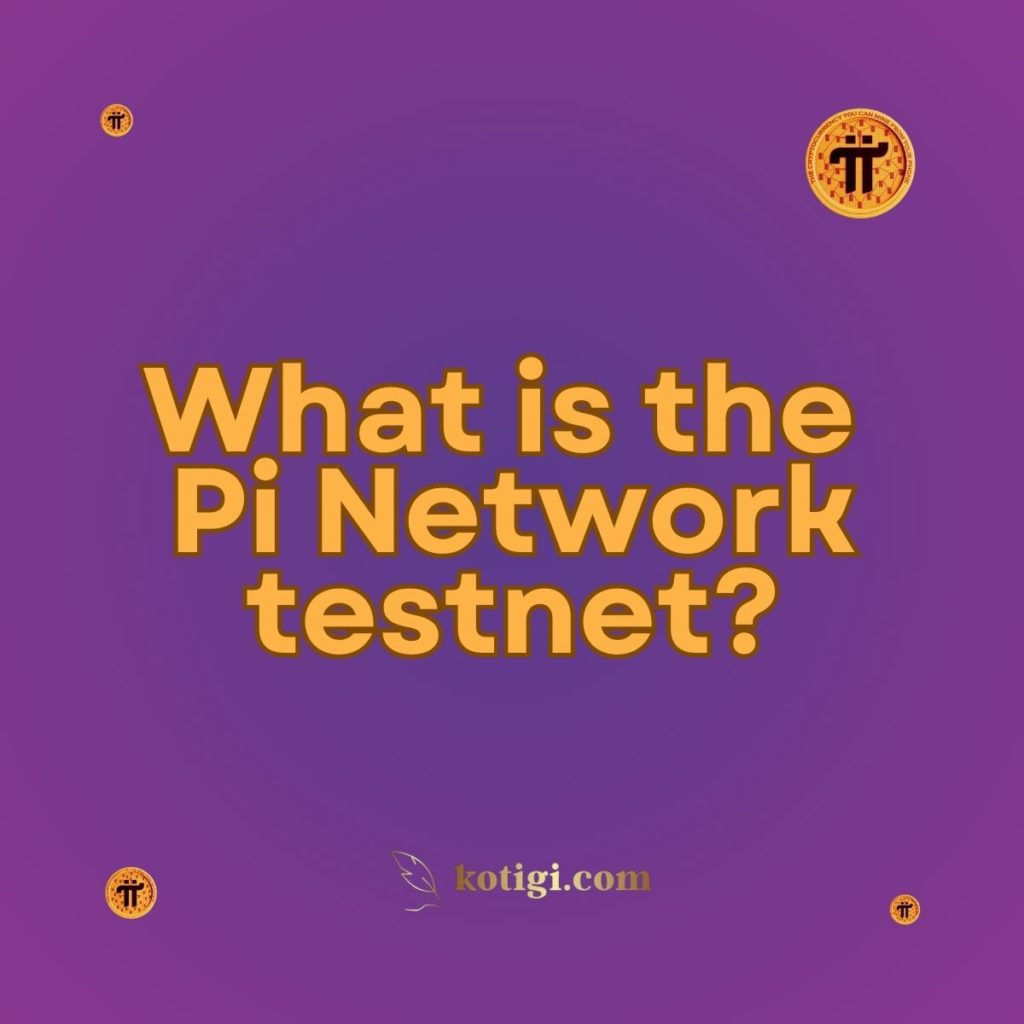
What is the Pi Network testnet?
The Pi Network testnet is a testing environment that allows developers and users to experiment with the Pi Network’s features, deploy decentralized applications (dApps), and assess the platform’s performance and scalability before moving to the mainnet.
Introduction
In the world of blockchain technology, a testnet serves as a vital component in the development and deployment of decentralized applications (dApps). The Pi Network, a unique cryptocurrency project focused on making mining accessible to everyone, has implemented a testnet to facilitate testing and experimentation within its ecosystem. This post will explore what the Pi Network testnet is, its significance, the differences between the testnet and mainnet, and how it supports developers and users in refining their applications and experiences.
What is the Pi Network Testnet?
Definition and Purpose
The Pi Network testnet is a designated testing environment where developers can deploy and test their decentralized applications (dApps) without the risks associated with real transactions on the main network. It serves as a sandbox for experimenting with the various functionalities of the Pi Network, allowing developers to assess their applications’ performance, security, and scalability. By utilizing the testnet, developers can identify and resolve issues before launching their projects on the mainnet, ultimately leading to a more robust and user-friendly experience.
Key Features of the Testnet
The Pi Network testnet comes equipped with several features that make it an effective testing ground for developers:
- Simulated Environment: The testnet mimics the mainnet environment, allowing developers to evaluate how their applications will perform under real-world conditions.
- No Real Value Transactions: Transactions conducted on the testnet do not involve real Pi tokens, making it a risk-free space for experimentation and debugging.
- Feedback Mechanism: Developers can gather feedback on their applications’ functionality and performance from users participating in the testnet, enabling iterative improvements.
Differences Between Testnet and Mainnet
Functionality and Use Cases
While both the testnet and mainnet serve the Pi Network ecosystem, their purposes and functionalities differ significantly:
- Testnet: This environment is primarily used for development and testing purposes. Developers can create, deploy, and assess their dApps and smart contracts without the risk of financial loss or security breaches. The testnet allows for rapid iteration and experimentation, enabling developers to refine their projects based on user feedback.
- Mainnet: The mainnet, on the other hand, is the live environment where real transactions take place. It is the fully functional version of the Pi Network, where users can mine Pi tokens and engage in transactions with real value. Applications deployed on the mainnet are subject to the platform’s rules and regulations, making it crucial for developers to ensure that their projects are thoroughly tested on the testnet before transitioning to the mainnet.
Token Utilization
In the testnet environment, any tokens used are not real and hold no monetary value. This allows developers to conduct transactions, test features, and debug issues without financial implications. Conversely, tokens on the mainnet have real value and can be mined, traded, or utilized within various applications.
Benefits of Using the Pi Network Testnet
Facilitating Developer Innovation
The Pi Network testnet serves as a crucial tool for developers, encouraging innovation and creativity. By providing a risk-free environment to explore new ideas and functionalities, developers can experiment with various aspects of their dApps. This freedom allows them to push the boundaries of what is possible within the Pi Network ecosystem and develop applications that are both functional and engaging for users.
Enhancing Security and Reliability
Testing applications on the testnet before deploying them on the mainnet significantly enhances their security and reliability. By identifying and addressing potential vulnerabilities during the testing phase, developers can ensure that their applications are resilient and secure when they go live. This proactive approach to security is essential for building trust within the Pi Network community.
User Engagement and Feedback
The testnet also provides an opportunity for users to engage with the development process. By participating in the testnet, users can provide valuable feedback on their experiences, helping developers refine their applications. This collaborative approach fosters a sense of community within the Pi Network and empowers users to contribute to the platform’s evolution.
Future Developments in the Pi Network Testnet
Expansion of Features
As the Pi Network continues to grow, the testnet is expected to expand its features and capabilities. Future updates may include enhanced tools for developers, improved performance metrics, and new functionalities that align with the evolving needs of the community. This evolution will ensure that the testnet remains a relevant and valuable resource for developers.
Integration with the Mainnet
The eventual integration of successful applications from the testnet into the mainnet will be a significant milestone for the Pi Network. Developers will be able to transition their projects smoothly, ensuring that users have access to high-quality, tested applications that enhance the overall user experience on the mainnet.
Community Involvement
As the Pi Network testnet evolves, community involvement will be crucial. The feedback and engagement from users will shape the development of the testnet and influence the direction of future updates. Encouraging active participation from both developers and users will foster a vibrant ecosystem that promotes continuous improvement.
Conclusion
The Pi Network testnet is an essential component of the Pi Network ecosystem, providing a safe and supportive environment for developers to create and refine their decentralized applications. By enabling testing and experimentation without the financial risks associated with the mainnet, the testnet fosters innovation and enhances the overall security and reliability of the applications that will eventually be deployed on the live network. As the Pi Network continues to evolve, the testnet will play a crucial role in shaping the future of the platform and its community.
Key Takeaways
- Definition: The Pi Network testnet is a dedicated testing environment for developers to deploy and assess dApps without financial risk.
- Differences: The testnet is primarily for experimentation, while the mainnet involves real-value transactions.
- Benefits: The testnet facilitates innovation, enhances security, and promotes user engagement through feedback.
- Future Developments: The testnet will continue to expand, incorporating new features and facilitating smooth integration with the mainnet.
- Community Involvement: Active participation from both developers and users is essential for the ongoing success and evolution of the Pi Network testnet.





